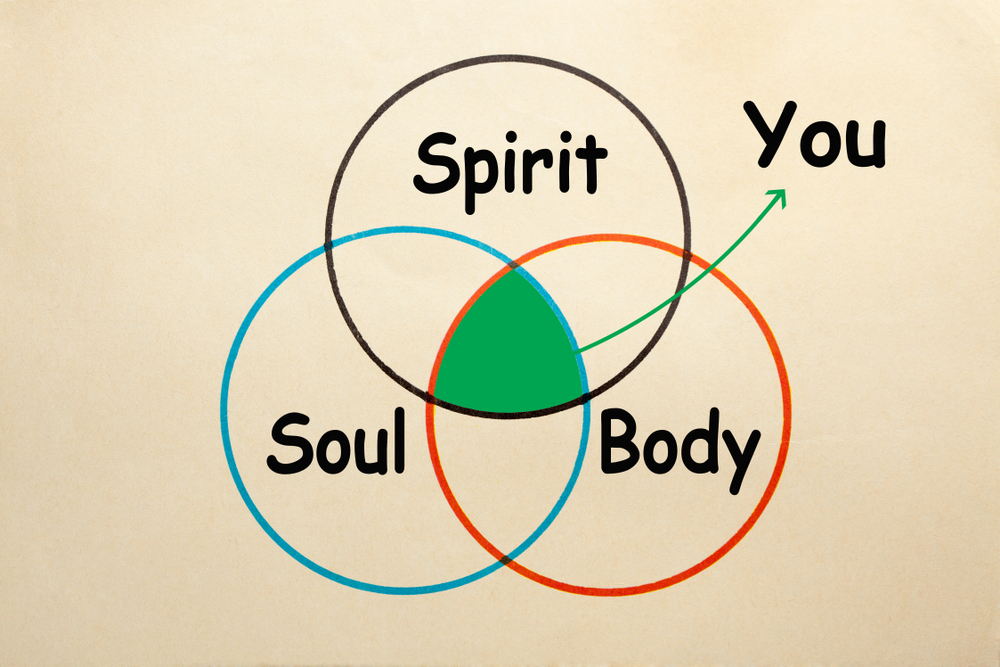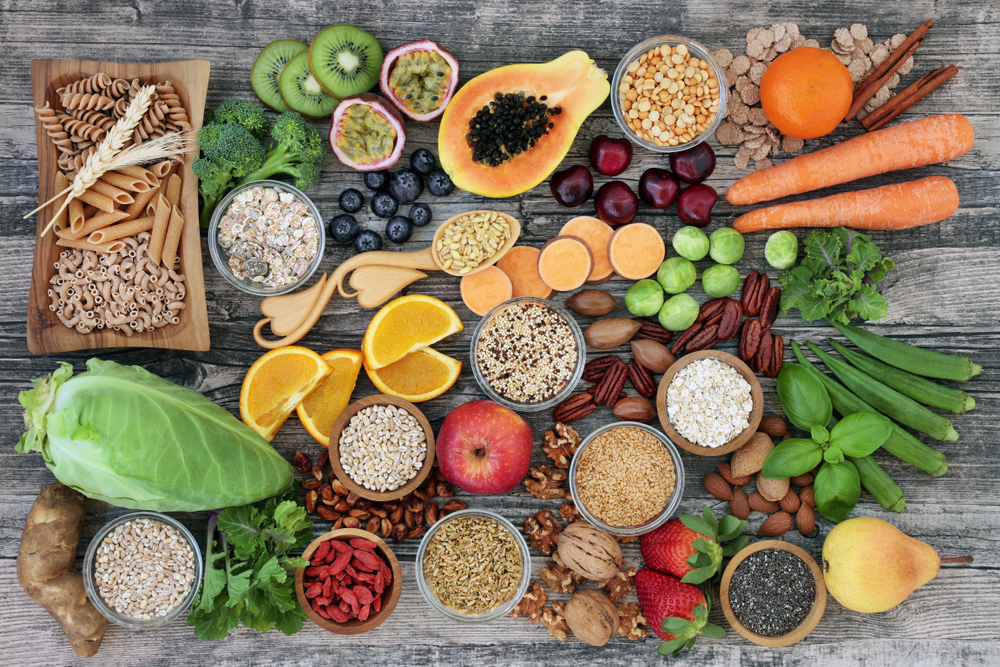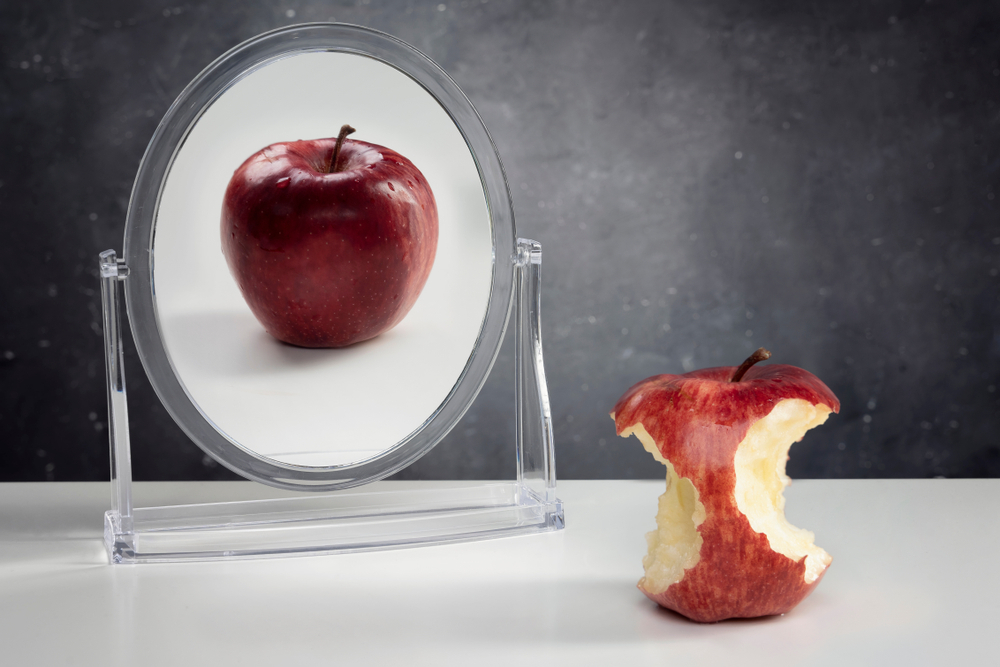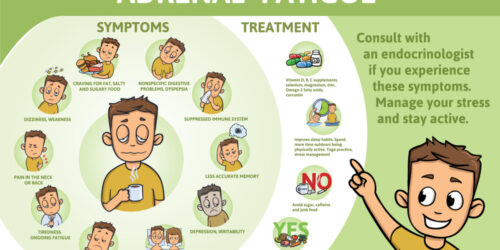Ultimate Guide to Holistic Nutrition: A Comprehensive Overview

Table of Contents
Imagine embarking on a gentle journey through the vibrant world of holistic nutrition where every bite nourishes not just the body but the soul as well. In today’s fast-paced, fast-food world, carving out a space for holistic nutrition has become not only a respite from nutrient deficits but a path to rejuvenated wellness. This comprehensive guide unfurls the wholesome tapestry of holistic nutrition, offering not a diet, but a sustained lifestyle that embraces every aspect of your well-being. Prepare to dive deep into the interconnecting streams of health, sustainability, and mindful eating that together, create the mosaic of holistic nutrition.
Understanding Holistic Nutrition
Imagine taking a step back from the hustle and bustle of daily life to focus on a kind of nourishment that feeds more than just our physical form. Holistic nutrition is like a dance that involves all parts of ourselves—our minds, bodies, and spirits. It’s about finding balance and harmony not only on our plates but in every aspect of our lives, from the way we sleep, to how we handle stress, to the things we feed our minds. This initial peek into holistic nutrition sets the tone for a journey towards a more vibrant and wholesome existence, one where every choice contributes to our overall well-being.
The Foundations of Holistic Wellness
Imagine feeding your body in a way that not only aims to keep you physically strong but also nourishes your peace of mind and inner joy. That’s the heart of holistic wellness, which sees health as a full-circle experience. It’s not just about munching on greens or counting calories; it’s about looking at your lifestyle from every angle.
Holistic wellness is grounded in the belief that our well-being is influenced by multiple dimensions of life, including our diet, physical activity, social connections, and mental health. Rather than treating symptoms, it focuses on root causes and prevention through natural means. This approach encourages us to treat food as medicine, to choose activities that balance our energies, and to build relationships that feed our souls just as much as our bodies.
Contrasting Holistic and Conventional Nutrition

When you think about holistic nutrition, think of it like a custom-made suit. It’s designed specifically for your body, considering every single detail of your health and lifestyle. In holistic nutrition, we focus on natural and unprocessed foods – all part of a bigger picture aimed to improve your overall well-being. It’s all about harmony and balance, not just counting calories or looking at the nutritional label.
Now, let’s compare that to conventional nutrition. This is more like buying a suit off the rack. It might fit pretty well, but it’s not tailored to you. Conventional nutrition often zeroes in on specific aspects of food, like calorie content or macronutrients. Sure, these are important, but it’s a piecemeal approach. We might miss out on the bigger health implications, like how our diet affects our mood or energy levels. Holistic nutrition takes a step back to see the entire wardrobe – how everything works together to make you feel great.
The Mind-Body-Spirit Connection

Ever wonder why we feel good when we eat healthy? It’s not just about physical health. Holistic nutrition focuses on the link between what we eat, our minds, and our spirits. It’s like a three-way friendship, where each one supports the others.
When our bodies get the right nutrients, our minds stay sharp and our spirits remain uplifted. You might have noticed when you eat a lot of processed foods, you feel sluggish and cranky. That’s your body saying it’s missing out on the good stuff! By choosing foods that are full of life, we’re actually feeding our soul as well as our stomach. So, when thinking about meals, think about how they’ll make all of you feel, from head to toe, inside and out.
Pillars of Holistic Nutritional Philosophy
When you step into the realm of holistic nutrition, you’ll find certain principles that stand tall like mighty pillars, supporting every aspect of this philosophy. These principles aren’t just about eating your veggies and fruits; they’re about understanding the profound impact food has on our health, environment, and society. It’s about tapping into the essence of whole foods, choosing what’s organic and local, and always circling back to the grounding concepts of balance and moderation. These core ideals guide us in making choices that are good for our bodies and the planet.
Whole Foods and Their Impact on Health

Imagine your kitchen brimming with vibrant fruits, crisp vegetables, hearty grains, and fresh nuts and seeds. This isn’t just a feast for the eyes; it’s the heart of a lifestyle that can transform your health. Whole foods are the superheroes of our plates – unrefined and unprocessed, they pack a punch full of nature’s best nutrients.
Eating these nourishing gifts directly from the earth means fewer sugars, low sodium, and more fiber in our diet. Not just that, our bodies get access to a plethora of antioxidants and phytochemicals, elements that work tirelessly to protect us from diseases. Regularly choosing whole foods over processed ones is like choosing a shield and spear to defend and nurture our well-being.
Importance of Organic and Locally Sourced Ingredients
When we talk about the heart of holistic wellness, we cannot overlook the role of organic and locally sourced ingredients. These are not just buzzwords; they embody a deep respect for nature and our connection to it. Choosing organic means saying yes to foods grown without synthetic pesticides, fertilizers, or genetically modified organisms (GMOs). This not only supports your body’s health by reducing exposure to harmful chemicals but also nurtures the environment by promoting biodiversity and reducing pollution.
Shopping locally takes this concept even further, strengthening community ties and ensuring that the food on your plate is seasonal and fresh. It’s like giving a high-five to mother nature and your local farmer at the same time! The smaller carbon footprint of local foods, due to reduced transportation distance, means you’re casting a vote for a healthier planet with every meal. Plus, the shorter the time between the farm and your fork, the less likely nutrients will be lost, making that farm-to-table salad a powerhouse of vitality.
Balance and Moderation: Key Concepts
In the realm of holistic eating, balance and moderation are not just buzzwords but the very heartbeat of a nourishing lifestyle. It’s about eating a variety of foods without overindulging in any one type. This concept isn’t about strict limitations or depriving yourself but about finding a happy middle ground where your meals are both enjoyable and nutritious.
Moderation means listening to your body’s signals—eating when you’re hungry and stopping when you’re full. It’s the art of savoring your food but also understanding that what you eat should fuel your body in the best way possible. Balance is ensuring that your plate is a colorful mix of carbohydrates, proteins, fats, vitamins, and minerals, which work together to keep your body functioning optimally. Think of it like a team where each player has a vital role, and when they all work together, you score the goal of good health.
Implementing a Holistic Nutrition Plan

Embarking on the journey of holistic nutrition isn’t about quick fixes or strict diets; it’s about shaping a lifestyle that aligns with your deepest values of health and well-being. Think of it as crafting a personal roadmap to vitality, with nourishment that supports every part of you—body, mind, and spirit. This section is your blueprint for taking those vibrant ideas about wellness and turning them into actionable steps that fit seamlessly into your day-to-day life. From choosing the right foods to understanding detox practices, get ready to personalize your nutrition in a way that feels good and right for you.
Step-by-Step Guide to Creating Your Personal Nutrition Plan
Imagine having a roadmap that leads to improved health, energy, and vitality. That’s what a personal nutrition plan can provide. It’s a unique way to understand what your body needs and how to give it just that. Let’s construct this roadmap, piece by piece, helping you to build a plan tailored just for you.
First, assess where you’re at. Take note of what you consume on a daily basis. Are you grabbing fast food because it’s quick? Or maybe you’re skipping meals? Write it all down. This food diary is a great starting point. It will show you your habits – the good, the bad, and the ones that might need a tweak or two.
Next, define your goals. Are you looking to feel more energized? Maybe you want to support your immune system better or manage your weight. Whatever your purpose, write it down. Goals give you a target to aim for and help keep you motivated. Keep them realistic and be patient with yourself. Change doesn’t happen overnight!
Now, research what foods nourish your body and support your goals. Whole foods, those unprocessed and without additives, are a great start. Learn about which types of foods contain the nutrients you need. This could mean more leafy greens, colorful veggies, whole grains, or lean proteins.
Time to create your meal plan! Use what you’ve learned to craft a weekly menu. Make sure it includes a variety of foods to give you a wide range of nutrients. Planning helps to avoid the “what’s for dinner?” dilemma and keeps you on track.
Lastly, reflect and adjust. Your plan isn’t set in stone. If something isn’t working, change it up. The goal is to find a way of eating that feels good and is good for you. Remember, your personal nutrition plan is a living document that grows with you on your wellness journey.
Detoxification and Cleansing Practices
Embarking on a journey of holistic nutrition often leads to exploring ways to eliminate toxins from the body. Detoxification and cleansing are practices that emphasize the importance of giving the body a break from its usual dietary routine. These practices are aimed at stimulating the body’s natural processes for removing impurities and aiding in the restoration and rebalance of internal systems.
Detoxification methods can include a range of strategies, from juice fasts to specific diets that focus on certain food groups, like fruits and vegetables. It’s essential, however, to approach these practices mindfully. Overdoing it can lead to nutrient deficiencies and energy loss, so moderation is the key. Conscious cleansing, guided by expert advice or well-researched plans, supports the body’s own ability to heal and recover. Remember, the goal is to rejuvenate, not deplete.
Incorporating Superfoods and Adaptogens
Superfoods are like the superheroes of the food world. They’re packed with vitamins, minerals, and antioxidants that help your body stay strong and healthy. From blueberries and kale to chia seeds and quinoa, these nutritional powerhouses can give you an energy boost, help fight off illness, and make you feel all-around amazing.
Adaptogens are a little different. They’re special herbs and plants that can help your body handle stress better. Think of adaptogens as your personal stress coaches. They gently work in the background, helping to balance things out so you don’t get overwhelmed. By adding adaptogens like ashwagandha, turmeric, or holy basil to your meals, you can help keep your stress levels in check and your body in a happy, calm state.
Integration of Ayurvedic and Traditional Chinese Medicine Principles

In the quest for a nourished body and mind, blending age-old wisdom from Ayurvedic and Traditional Chinese Medicine (TCM) with modern nutritional insights can lead to profound health benefits. Both of these traditional health systems believe in the deep connection between nature and human well-being. They teach that what we eat not only fuels our body but also affects our energy levels and emotional state.
Ayurvedic Nutrition Principles
Ayurveda, originating from India, emphasizes eating in accordance with one’s dosha, or body type (Vata, Pitta, and Kapha), and the current season. Key Ayurvedic concepts include:
- Understanding Your Dosha: Tailoring your diet to balance your unique constitution can help improve digestion, vitality, and mental clarity.
- Seasonal Eating: Consuming seasonal, locally-grown produce supports the body’s natural rhythms and promotes better health.
Traditional Chinese Medicine Nutrition
Similarly, TCM holds the belief that the body is made up of interconnected systems that must be in balance to maintain good health. TCM focuses on the yin and yang of foods, their energy properties, and the impact they have on the body’s Qi (vital energy). Essential elements of TCM in nutrition are:
- Balancing Yin and Yang: Eating a mix of foods that have cooling (yin) or warming (yang) properties helps maintain internal harmony.
- Choosing Foods For Qi: Selecting foods that enhance the flow of Qi can lead to improved energy levels and strength.
By integrating these principles into your diet, you create a unique and balanced approach to nutrition, ensuring that your food choices support not only your physical body but also your emotional and spiritual health.
The Psychological Aspect of Holistic Nutrition

Imagine every meal as a moment of connection with your inner self and emotions. Eating isn’t just a physical requirement—it’s a complex experience that plays a crucial role in mental health and wellbeing. With holistic nutrition, we pay attention to mindful eating practices and the psychology of eating, understanding that our relationship with food is as much about nourishing the mind as it is about fueling the body. This part of the guide explores the emotional landscapes of eating, how our diet impacts our psychology, and the techniques that can harmonize our nutritional habits with emotional wellness.
Mindful Eating Practices
Bringing your full attention to the dining table, mindful eating is more than just a buzzword, it’s transforming the way we consume our meals. It’s about experiencing food with all your senses, tuning into the flavors, textures, and aromas – essentially, dining with intention and awareness. Imagine pausing before the first bite, appreciating the journey your food has taken to reach your plate. It’s not simply eating; it’s a practice that connects you to the moment and to the nourishment you are about to receive.
By eating mindfully, you become an active participant in your own nutrition, listening intently to what your body needs and how it reacts to different foods. This means no more mechanical munching in front of the TV or mindlessly scrolling through your phone during meals. Instead, you’ll learn to savor each bite and recognize when you’re comfortably full, preventing overeating and promoting better digestion. Mindful eating is not a diet, it’s a way of life that paves the road to a healthier, more satisfied you.
Emotional Eating and Its Impact on Nutrition
Have you ever reached for a snack when feeling down or stressed? If you have, you’re not alone. This is what we call emotional eating, and it’s a habit that can seriously mess with our nutritional goals. Emotional eating happens when our feelings dictate our food choices, and these choices are often not the healthiest.
Instead of munching on fruits or whole grains, we find ourselves gobbling up cookies, chips, or ice cream. The tough part is, these comfort foods can give a quick mood boost, but they also lead to a cycle of eating that can harm our health. Over time, leaning on sugary or high-fat foods can lead to weight gain and a bunch of other health issues. Embracing holistic nutrition means recognizing these patterns and finding better ways to deal with our emotions.
Nutrition Psychology and Its Role
Nutrition psychology is an intriguing field that explores how our eating habits are influenced by our minds. It’s like a behind-the-scenes look into why we choose certain foods and what makes us crave them. Our mental and emotional states play a huge part in our daily food choices. When feeling down or stressed, some might reach for a comforting slice of cake, while others might lose their appetite completely.
One key aspect of nutrition psychology is mindful eating. This practice involves being fully aware of the food we’re eating and savoring every bite without any distractions, like the TV or phones. By eating mindfully, we can notice when we’re actually full, enjoy our meals more, and maybe even avoid that extra cookie we didn’t really want. It’s not just about what we eat, but also about enjoying the process and understanding our body’s signals.
Holistic Nutrition Across the Lifecycle

Nourishing our bodies right from the start of life’s journey to when we’re waving at our golden years is vital. Every stage of life brings its own nutritional needs, and taking a holistic approach ensures that we’re not just eating, but thriving at any age. From the tenderness of infancy to the complexity of elder nutrition, the canvas of our diet evolves. Let’s delve into how holistic nutrition adapts through the ages, coloring each chapter of our story with personalized health and vibrancy.
Nutritional Needs from Infancy to Elderly
Every stage of life brings unique dietary demands, and understanding these is crucial for maintaining optimal health at every age. Infancy is a time of rapid growth, so a diet rich in essential nutrients like iron, calcium, and vitamins is vital. Breast milk or formula provides infants with a perfect balance of nutrition during the first months of life, while the introduction of solid foods around six months should be rich in vegetables, fruits, and grains to support development.
As children grow, consistent nutrition supports their active bodies and developing brains. School-aged kids need a balanced diet full of fruits, vegetables, whole grains, proteins, and dairy to keep them energized for learning and play. Adolescence heralds another growth spurt, increasing the need for calories and nutrients. Protein, calcium, and iron are particularly important during these years to support the growth of bones and muscles.
Moving into adulthood, a balanced diet that prevents disease and maintains health is key. As people age, they may need fewer calories but they still require nutrient-rich foods. The focus should be on foods that are high in fiber, low in saturated fats, and contain plenty of antioxidants.
Older adults often face unique challenges such as a diminished sense of taste or appetite, and certain health conditions that may affect nutrient absorption. As a result, they may need more calcium, vitamin D, B12, and other key nutrients to maintain bone density and cognitive function. It’s also important for the elderly to stay hydrated and include physical activity as part of their daily routine to complement their diet for a holistic approach to wellness.
Pregnancy and Holistic Nutritional Considerations
Imagine nurturing two lives at once. Pregnancy isn’t just a personal journey; it’s an incredible chance to set the foundation for your baby’s lifetime well-being. This special time calls for a diet that’s as rich in love and care as it is in nutrients. Holistic nutrition comes into play, focusing on natural, whole foods that provide the essential vitamins, minerals, and energy both mother and child need.
Expectant moms should emphasize a balance of fruits, vegetables, whole grains, and lean proteins. Also, incorporating foods high in folic acid, iron, calcium, and omega-3 fatty acids is crucial for supporting the baby’s development and mom’s health. Steering clear of processed foods, reducing caffeine intake, and staying hydrated are simple yet powerful practices. Listen to your body’s cues and honor them with mindful choices that benefit both you and your growing little one.
Adapting to Age-Related Changes in Diet and Digestion
As we age, our bodies go through a myriad of changes, and so must our diet and digestive practices. With each passing decade, the metabolism slows, the digestive system may become less efficient, and nutritional needs shift. This isn’t a sign to worry, but a gentle reminder to tweak our eating habits to match our body’s evolving requirements.
It’s important to focus on fiber-rich fruits and vegetables, lean proteins, and whole grains to keep things moving smoothly. Seniors, in particular, should drink plenty of water to stay hydrated and help digestion. It’s also useful to have frequent, smaller meals instead of heavy, large ones to keep up with a slower metabolism. Remember, adapting your diet as you grow older is not about restriction, but about finding harmony with your changing body.
Challenges and Considerations
Embarking on the path to a more natural and mindful way of eating comes with its unique set of hurdles. It’s important to recognize these challenges head-on and consider practical solutions for a smoother journey toward better health. From sorting through a sea of nutritional advice to making lifestyle changes on a budget, we’ll look at the common obstacles faced by many and how to navigate them, ensuring your shift to this fulfilling way of eating is as seamless as possible.
Navigating Misinformation in Nutrition
In today’s internet age, we’re bombarded with an overwhelming amount of nutrition advice. It can be a real challenge to figure out what’s legit and what’s simply a fad. Everywhere you look, there are miracle diets and superfoods claiming to offer a quick fix to all your health woes. But here’s the kicker: not all that glitters is gold. Many of these trendy diets lack scientific backing and can actually do more harm than good.
To dodge the nutrition myths, you’ve got to become a bit of a detective. Always check where the information is coming from and if it’s supported by credible experts or studies. Remember, if something seems too good to be true, take a step back and scrutinize before you incorporate it into your life. By staying informed and a little skeptical, you can make choices that truly benefit your health.
Economic and Social Obstacles to Holistic Choices
Navigating the world of health and wellness is not without its challenges. One significant hurdle many face is the cost associated with adopting a holistic lifestyle. Organic and locally-sourced ingredients often come with a higher price tag compared to their conventional counterparts, which can make them less accessible for individuals on a budget. It’s not just about the grocery bill either—time constraints can also make preparing wholesome meals a tall order for those with busy schedules.
On the social front, peer pressure and cultural norms can influence our food choices more than we might like to admit. Family gatherings, eating out with friends, or workplace environments can introduce situations where making holistic choices becomes difficult. It can be challenging to stick to a nutrition plan that’s out of sync with the eating habits of those around us. This social aspect of eating is where many people feel they must choose between their wellness goals and social conformity.
Allergies, Intolerances and Personalizing your Nutritional Needs
Navigating the world of food with allergies or intolerances can feel like walking through a minefield. Yet, customization is king in holistic nutrition – it is about understanding and honoring your body’s unique reactions to certain foods. Whether it’s steering clear of nuts that provoke an allergic response or sidestepping gluten that doesn’t agree with your digestive system, personalizing your diet is crucial.
While holistic nutrition emphasizes natural and whole foods, it also recognizes that individual needs must shape dietary choices. Adaptation is a central concept; it’s about tailoring the abundance of our Earth’s provisions to what works for you. If dairy provokes discomfort, for example, exploring plant-based alternatives like almond or oat milk can offer both nourishment and pleasure without the distress. Embrace this journey of discovery, and adjust your diet to fit you like a glove, ensuring that what you eat doesn’t just sustain you, but also helps you thrive.
Measuring Success and Adjusting the Holistic Path

Think of your journey through holistic nutrition as a hike on a vibrant, winding trail. Along the way, you’ll want to check you’re on the right path and make sure you’re enjoying the scenery. It’s essential to understand how to measure your progress and when to adjust your course for continuous improvement in your wellness adventure. Just like a hiker uses a compass, in holistic nutrition, you use specific signs and feelings in your body and mind to assess how well you’re doing. Let’s explore how you can track your vitality and tweak your nutritional trek for the long haul.
Tracking Progress and Vitality Markers
To truly embrace a holistic lifestyle, it’s helpful to keep track of how you’re doing. Think of it as keeping a diary that reflects not just what you ate, but how you felt and what changes you notice. Vitality markers are signposts along the road to wellness, indicating the positive shifts in your health and well-being. These can include clear skin, balanced energy levels throughout the day, and even improvements in mood and sleep patterns.
Start by writing down your goals and noting your starting point. Maybe you’re aiming for better digestion or more stamina. As days turn into weeks, you can look back at your notes and see the transformation. It’s not just about catching a glimpse of yourself in the mirror and seeing a healthier image; it’s about feeling the lightness in your step, the clarity in your thoughts, and the joy in everyday activities. These changes are your body’s way of saying “thank you” for feeding it holistically.
Lifestyle Adjustments for Sustained Well-being
Imagine shaping your everyday life with small changes that have a big impact on your overall health. That’s exactly what lifestyle adjustments are all about. These tweaks in your day-to-day actions are stepping stones to maintaining long-term well-being and keeping your body and mind in harmony.
We often focus on diet alone, but a holistic approach to nutrition includes considering our sleep, exercise, and stress management habits. Getting adequate sleep, for instance, is not just about feeling rested — it’s crucial for aiding digestion, healing, and mental clarity. Regular physical activity keeps our bodies strong and can improve mood and even digestion. Managing stress through practices like yoga or meditation can help prevent emotional eating and keep our relationship with food as nourishing as possible.
Balanced holistic nutrition truly goes beyond the plate. Whether it’s choosing to bike to work, spending time with loved ones, or even saying no to overcommitments, each act cultivates a fertile ground for wellness to thrive. Embrace these shifts gradually; the path to genuine health is more about consistent steps than giant leaps.
The Journey of Continuous Adaptation and Growth
Life is always changing, and so are we. That’s why growth is at the heart of a holistic approach to nutrition—it’s all about adapting as your needs change. This isn’t a one-size-fits-all plan; it’s a personal journey that respects your unique strengths and challenges. As you learn more about how foods affect you and listen closely to your body’s signals, you’re able to make better choices that sustain your well-being.
This ongoing process is much like tending a garden. You might have to deal with weeds and pests (think unhealthy cravings or misinformation), but with the right tools and knowledge, you can cultivate a vibrant, healthy lifestyle. Watch as small adjustments blossom into habits that support not just your physical health, but also your mental and emotional balance. Keep in mind, this journey is yours—be patient and kind to yourself as you navigate the ever-evolving landscape of holistic health.
Conclusion
Embrace the soothing ebb and flow as holistic nutrition gentles into your life, like a serene river nurturing the fertile valleys of health. This guide stands as an invitation to a paradigm shift firmly rooted in mindful consumption and intrinsic awareness, a guide where every morsel partakes in the symphony of innate wellness. With the seeds of knowledge now sown, cultivate them on your continued quest for a nourished life, unchanged by trends but transformed by the touchstones of holistic nutrition. Leverage this guide as your compass and let it echo as a lasting testament to a path that offers not only sustenance but vitality in its purest form.
I can suggest some reputable sources and organizations that offer valuable information on holistic nutrition. You can search for these online or visit their websites for more in-depth resources:
- Academy of Nutrition and Dietetics (AND):
- Website: eatright.org
- National Center for Complementary and Integrative Health (NCCIH):
- Website: nccih.nih.gov
- World Health Organization (WHO) Nutrition Topics:
- Website: who.int/nutrition/topics
- Harvard T.H. Chan School of Public Health – The Nutrition Source:
- Website: nutritionsource.org
- Mayo Clinic – Nutrition and Healthy Eating:
- Holistic Nutrition Credentialing Board:
- Website: holisticnutritioncredentialing.com








Your point of view caught my eye and was very interesting. Thanks. I have a question for you.
Can you be more specific about the content of your article? After reading it, I still have some doubts. Hope you can help me.